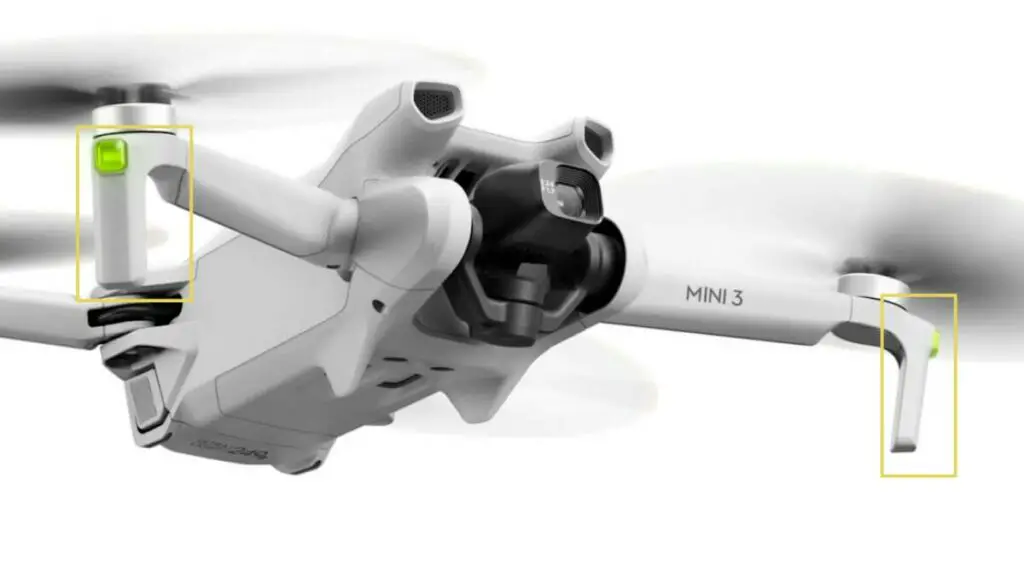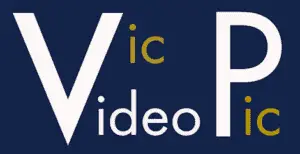The new DJI Mini 3 is a cheaper version the Mini 3 Pro, with several functionalities missing. Most of these features relate to video. For most users, I would recommend going for the Pro model if the budget allows for it, as these features are certainly worth the $200 difference in price
For users interested mainly in still images, I have made a specific comparison of the Mini 3 vs 3 Pro for photography
Recently DJI has lowered the price of the Mini 3 and added the 48 MP mode. My analysis in the article: Mini 3 vs 3 Pro, which lightweight drone to buy?
If you prefer to watch this as a video, you will find my YouTube version at the end of this article
Differences Between the Two Models
The engine, body, gimbal, and camera in the two models are the same, so there is no difference in in-flight performance, speed, stability, and wind resistance
The Sensor Size is 1/1.3” and the Video Resolution is 4k
Obstacle Sensors
The new model is not supplied with the three-directional obstacle sensor of the Pro model
The lack of an obstacle detection system is a major limitation in terms of safety, not only for beginners
When shooting footage professionally in all different conditions, the excellent APAS system of the Mini 3 Pro has saved my drone from crashing on many occasions
It is a crucial feature that by itself might justify the difference in price between the two models for many users
More details about the obstacle detection system of the Mini 3 Pro in my articles How to use follow me and tracking and obstacle avoidance system in the Mini 3 Pro
Video Bitrate
Another difference between the two models is video bitrate. In the Mini 3, it has been reduced to 100Mbps from 150Mbps in the Pro model. A higher bitrate means less compression in the video file and thus more info retained and better performance in heavy post-processing
But the 100 Mbps of the Mini 3 is already a relatively high value and the difference does not seem to affect image quality
Frame Rate and Slow Motion
The Mini 3 has a frame rate of up to 30 fps at 4k for video, vs 60 fps for the Pro. The cheaper model cannot apply slow-motion
More details about frame rates and slow motion with the Mini 3 and 3 Pro in this article
This is a limitation, as slowing down the footage is an excellent way to add interest, especially when filming close to a moving subject, but probably not a deal breaker for most casual users
I have done a specific article on how to use higher frame rates for slow motion
Intelligent Modes
The Mini 3 doesn’t t have the three intelligent flight modes grouped under the name Focus Track:
This is a major difference for two reasons:
- There are no tracking capabilities, very useful for following moving targets or for vlogging
- Using the modes Spotlight and POI it is possible to maintain a static target in the same position in the frame while performing all sorts of moves. I use these modes constantly and I find them invaluable for producing flawless cinematic footage
MasterShots has also been taken away from the Mini 3
The only automated mode available in the basic model is QuickShots
The basic Mini 3 doesn’t have hyperlapse
Signal Transmission
The only major flaw I find in the Mini 3 Pro is the signal transmission in areas with strong interference
This is probably due to the antenna housed inside the arms. With the basic Mini 3, DJI has added a couple of feet at the end of the arms where the antennas are now housed, like in the Mini 2

Even though the Pro model has a more recent transmission system, my impression so far is that the basic model has a slightly better signal, due to the location of the antennas
However, the signal quality varies a lot according to the geographic location
More details in my article about Signal range of the Mini 3 Pro
Battery Life
In this department the more affordable Mini 3 outperforms the Pro model
Due to the energy saved by the lack of obstacle avoidance and other functionalities, the Mini 3 has an announced battery life of 38 minutes (51 with the Plus battery) vs 34 minutes for the Pro model (47 with the Plus)
Other Differences
The maximum ISO value in the Mini 3 is 3200, versus 6400 for the Mini 3 Pro, but such a high value is not needed with the extreme f 1.7 aperture of the lens. More details in my article How to expose video and photos with the Mini 3 and 3 Pro
The cheaper model is not compatible with the RC Pro, the luxury controller priced at around $1,000, this will mostly impact users who already own the RC Pro and use it with another DJI Drone
The transmission system in the Mini 3 is Ocusynch 2 which displays a resolution of 720p on the controller, versus Ocusynch 3 with a 1080p resolution in the Pro model. The footage on the controller looks crispier on the Pro model, but this is not a deal-breaker
Both models can rotate the gimbal to shoot video and photos in a vertical orientation, a big selling point for users active on social media
Footage in Normal Mode
The only color mode available in the basic MIni 3 is Normal. It is an 8-bit mode to be used right out of the camera with little or no color grading
The results are the same in the two models, this is not surprising, since they have the same camera
The quality is remarkable, although a slight increase in contrast and saturation is needed
I find a slight tendency towards yellowish tones, so I set the white balance just above 5000 Kelvins, while with other DJI models, I prefer 5600
When lowering the angle of the camera to take the sky out of the equation, detail and color rendition are good. Footage taken in Normal mode with both models is excellent for social media usage
An area where the two models suffer a bit compared to the Air 2s and the Mavic 3 is footage shot in the direction of the sun. The dynamic range is certainly not as extended as in the more expensive models and this is not surprising, due partly to the smaller sensor and partly to marketing reasons
When exposing to preserve the highlights, the shadows remain too dark and there is some flare near the position of the sun. Not too bad, but again not as good as with the bigger models
A department where the Mini models shine (forgiving the pun) is night footage. Thanks to the extremely wide aperture of 1.7, the performance in low light is astonishing, it can even rival the one of the mighty Mavic 3
Even in the darkest scenes, the level of noise is acceptable and can be perfectly managed using Neat Video, the excellent denoiser that I use constantly, more details about Neat Video in my specific article
In footage taken in vertical format, there is practically no difference in quality compared to the traditional format
More details about Normal and D Cinelike profiles are in this article
D Cinelike
The Mini 3 Pro has the 10-bit flat profile color mode D Cinelike, meant for serious color grading
A 10-bit profile can display over 1 bn color, vs 16.7 ml for an 8-bit one, the wider color spectrum prevents color banding in uniform areas and other artifacts
This profile has a wider dynamic range, it is meant to perform better in situations with a lot of difference in luminosity. Since D Cinelike is more solid in post-processing, it is a better choice to adapt the footage to the specific color range of a project
Firmware updates have constantly improved D Cinelike and it is now a true good-quality 10-bit mode
